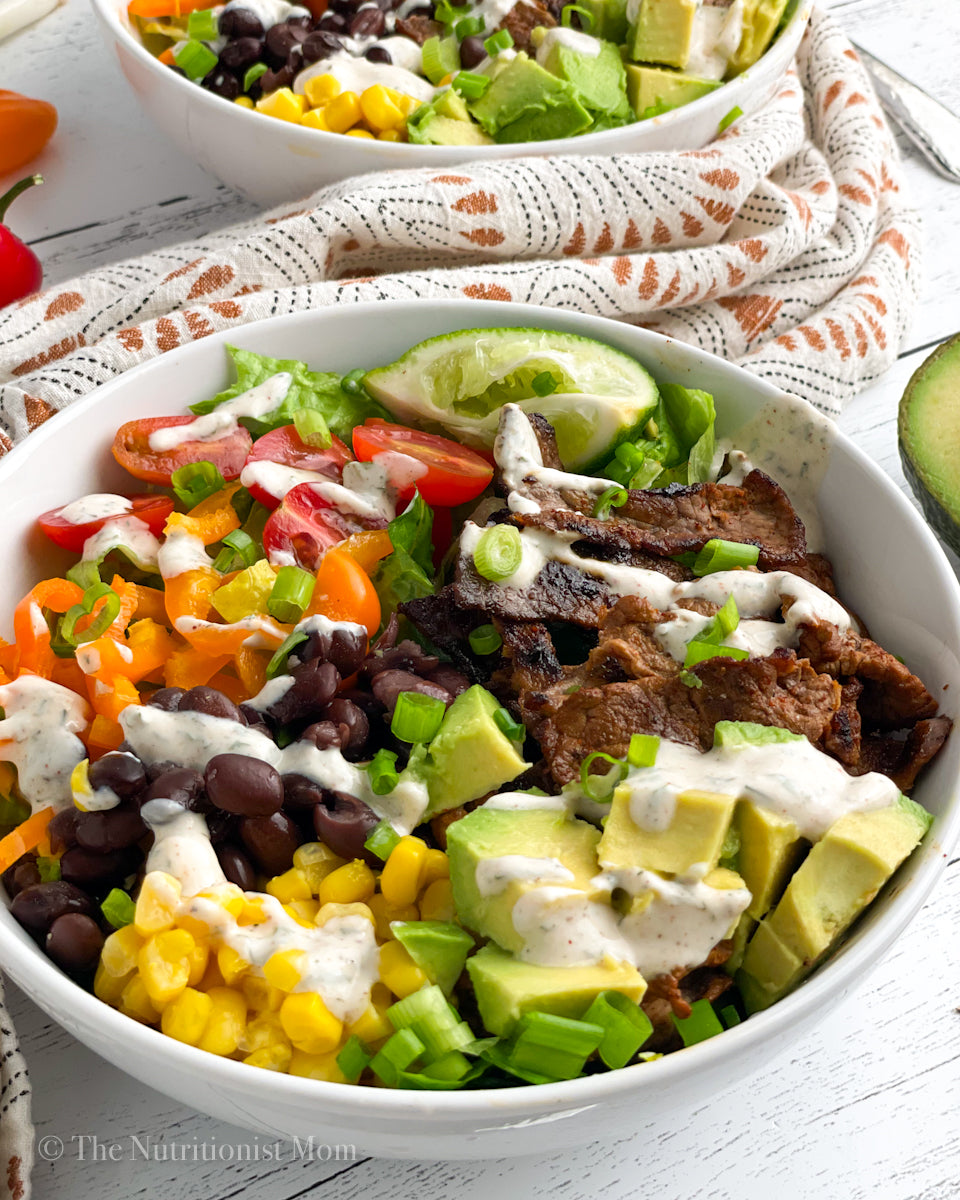HOW TO REVERSE DIET

A tactic that’s well-known among competition prep coaches yet more or less unheard of to the majority of dieters is “reverse-dieting.” However, reverse-dieting may be the missing link between losing the weight and actually keeping it off!
The Problem
You go on a strict diet, lose a bunch of weight, then return to eating like normal (maybe even healthier), only to gain all the weight back plus some. The next time you try to get the weight off, it feels like you have to restrict even more and exercise even harder, and then it’s a constant battle to keep the weight off. You know you’re eating too little, but you’re also not losing. Sound familiar?

This all happens due to your metabolism’s ability to adapt to calorie restriction. You see, anytime you’re in a calorie deficit for more than a day or two, your metabolism actually slows down to some extent. This “slowdown effect” is far more drastic with chronic dieting and extreme crash diets.1-2 If you cut calories by 25% or so (a modest deficit), your metabolic rate might only decline by 6% over a 6-month period.3 However, with a calorie deficit of 50% or more (starvation-like conditions), your metabolic rate could drop as much as 40% over a 6-month period.4
Particularly when you subject your body to extreme calorie restriction, your body responds to the perceived “famine” by down-regulating metabolic rate as a survival mechanism (commonly referred to “starvation mode).
In addition, dieting longer than 6 months (and even shorter periods of extreme dieting) can result in several undesirable metabolic adaptations:
- Reduced T3 thyroid hormone which effectively slows your metabolism down!5
- Elevated cortisol which causes excess belly fat, muscle loss, elevated blood sugar and insulin suppression, increased appetite, immune suppression, GI distress, high blood pressure, reduced sex hormones and fertility (has also been linked to insomnia, chronic fatigue syndrome, thyroid disorders, dementia, depression)6-8
- Decreased leptin which is a key appetite-suppressing and fat-burning hormone8
- Increased ghrelin which is an appetite-stimulating hormone (culprit for ramped up cravings and hunger)8

It’s no wonder so many people struggle with maintaining a healthy weight – that’s hard to accomplish with a slowed metabolism and compromised hormone levels. You’re eating less than before, gaining easier than ever, feeling exhausted from all the exercise and dieting, and feeling discouraged by your lack of progress.
The Solution: Reverse-Dieting
In short, stop dieting and do the opposite. Start eating more and exercising less! I know, that sounds like a recipe for weight gain, and it sure would be if you add a ton of calories all at once.9 Instead, I’m suggesting that you slowly add calories from your current maintenance level until you reach a level that is “normal” for your current lean body mass and activity level (this article can help you determine your goal intake). This is the basic concept of reverse-dieting.
Reverse-dieting remains to be studied in a controlled clinical setting, but there is abundant anecdotal evidence as well as many elite coaches that support its efficacy.10 I myself have reverse-dieted twice, the first time from 1,500 calories all the way up to 2,300 calories and only gained 2 pounds in the process. I have helped dozens of clients reverse-diet, all of which either maintained weight, lost weight, or gained less than a 5 lbs. The biggest “gain” is freedom from restriction and a healthier metabolism.

Still not sure reverse-dieting is for you? Here are some pros and cons to consider:
Pros:
- You can eat way more food with very little weight gain
- You will perform better in your workouts due to more available fuel
- You can finally build lean muscle due to boosted anabolic hormones and more available calories (building muscle takes extra calories and will not happen in a deficit)
- You may even shed body fat as hormone levels are normalized (your body is finally able to build muscle and release stubborn fat)
- Both men and women often see improvements in levels of their sex hormones and libido, and women may regain a normal cycle if it was missing before (perhaps not welcome, but it’s a sign of health)
- You should have more energy
- Having an increased calorie allowance makes eating out and social events less stressful
- Having an increased maintenance intake makes fat loss easier (you won’t have to cut calories as low to lose weight)
Cons:
- You don’t get to eat that much more at first
- You still have to log your food and weigh-in meticulously for it to work
- You may experience temporary bloating or “puffiness” as your body adjusts to eating more
- You may feel like you’re forcing yourself to eat
- You will have to postpone weight loss goals (reverse-dieting is not a weight loss plan!)
- You have to be willing to accept 2-5 lbs. of weight gain (even if it’s only glycogen and water weight)
- A serious reverse-diet takes anywhere from 2-6 months.
Think of reverse-dieting as an investment into your metabolic health. No, you’re probably not going to come out of it 5 pounds lighter or your leanest ever (though it’s possible). However, with an increased metabolic rate and optimized hormone levels, you’re going to find that fat loss, muscle-building, and maintaining a healthy weight are a whole lot easier.
Getting Started
Step 1: Assess Current Calorie Intake
The first step is to take an assessment of your current calorie intake and hours spent exercising each week. If you’ve been dieting a long time, you might know exactly how many calories you’re taking in and your weight history. If not, log your diet for two weeks to figure out your average daily calorie intake. We also need to know how many hours of exercise you’re doing each week, so either log your daily exercise or take notes (the MyFitnessPal app is great for this).

Step 2: Consider Your Weight Trend
Next, consider your recent weight trend. At your current intake, have you been maintaining, consistently losing, or consistently gaining? Day-to-day fluctuations do not count as gaining or losing – we’re looking for a consistent weight trend from one week to the next (a good way to measure this is to compare your lowest weight each week). We know one pound of weight gain takes about a 3,500-calorie surplus, and one pound of weight loss takes roughly a 3,500-calorie deficit.
If you stayed relatively the same weight over the two weeks of logging, you can assume your average calorie intake must be your maintenance intake at your current activity level. Take note of this!
If you’ve been gaining roughly half a pound per week, that’s equivalent to a 1,750-calorie surplus each week, or a 250-calories surplus each day. To figure out your true maintenance calorie intake, subtract 250 calories from your average daily calorie intake. The reasoning is, you should have maintained weight minus those 250 calories less per day.
If you’ve been losing roughly half a pound per week, that’s equivalent to a 1,750-calorie deficit each week, or a 250-calorie deficit each day. In this case, add 250 calories to your average daily calorie intake to determine your true maintenance calorie intake. Again, the thinking is you should have maintained weight with an additional 250 calories per day.

Step 3: Assess Exercise Levels
Now that we know your maintenance calorie intake, let’s talk about exercise levels. If you’re exercising 6 hours or less per week, you don’t need to change anything. However, if you’re exercising over 6 hours per week, you definitely need to scale back in order for your metabolism to recover.
Much like increasing calories, reducing exercise should be done gradually, not all at once. Start by reducing your total exercise hours by one hour each week (shorten your daily workouts by 10 minutes each). Cardio is the first thing you should cut back. Strength training helps build muscle, and having more lean body mass increases your basal metabolic rate, which is the goal here.
Step 4: Calculate Your TDEE
If you haven’t already done so, calculate your estimated total daily energy expenditure (TDEE) based off your lean body mass and activity level as shown in this article. This will help you compare how many calories you’re actually getting (we just figured that out) to how many calories you should be getting.
Step 5: Decide Whether to Reverse Diet
If your current maintenance calorie intake is 85% of your TDEE or more, you may not benefit much from a reverse diet. Could you be eating more nutrient-dense foods and drinking more water to better control hunger levels? Have you been able to build muscle and lose fat when you actually stick to a plan? Were your hormone levels normal in your last physical? And ladies, have you had a regular menstrual cycle? If you can answer “yes” to these questions, a reverse diet isn’t necessary, but you may still opt to for performance or satiety reasons.
Interestingly, studies show that a slight calorie deficit may actually promote health and longevity,11 so eating more isn’t “life” (pun intended). If you’re below 85% of your TDEE however, you could definitely benefit from a reverse diet!

Adding Calories & Measuring Results
You will find a lot of conflicting information surrounding how many calories to add. I have seen coaches recommend anywhere from 25 calories to 250 calories per week. Of course, this depends on your priorities. Are you wanting to stay as lean as possible, or increase calories over a short period of time? Adding calories too fast does not give your metabolism adequate time to adjust and mostly just causes unwanted fat gain.
Method 1: Aggressive Reverse-Diet
If you’re underweight, or just want to get your calories up ASAP, you may be okay with gaining five pounds or so over the next couple months. In this case, I would suggest adding 100 calories to your daily calorie intake each week (16 grams of carbs and 4 grams of fat). If your protein intake is less than 0.8 grams per pound of lean body mass, up your protein to this level right away (refer to this article to estimate lean body mass).
Don’t worry, studies show you can drastically increase protein with no effect on body fat.12,13 As high as 1.3 grams of protein per pound of lean body mass is fine, but there are no real benefits beyond this level.14 If you’re getting more than this, you’ll want reduce your protein to the recommended range.
For fats, I usually start my clients at 0.3-0.4 grams per pound of lean body mass. Fill your remaining calories with carbs as needed to reach your true maintenance calorie intake, as determined above.
Now that your protein and fat are at a good starting place, you can start increasing your daily intake by 100 calories per week. I recommend weighing in daily during your reverse diet and recording your lowest weight each week.
As long as your lowest weight holds steady or increases less than a pound per week, you can keep adding 100 calories each week. If your lowest weight stays the same week after week, you may wish to add calories even more aggressively. Try adding 150 calories each week (20 grams of carbs and 5 grams of fat), and see how your weight responds.

If your weight jumps up a pound or more, hold your macros steady for a week and wait to see if your weight goes back down. If it does, continue adding 150 calories per week. If your weight stays the same, keep adding calories, but maybe go back to 100 calories per week. If your weight keeps creeping up a pound or more per week, you may want to add calories more cautiously (50 calories per week), or you might decide you’re okay with the rate of weight gain.
Remember, if you were over-exercising before (more than 6 hours per week), reduce your daily exercise by 10 minutes each week until you’re down 6 hours per week.
Method 2: Moderate Reverse-Diet
If you want to put on very little bodyfat without dragging out your reverse-diet for 6 months or more, start by adding 50 calories to your daily calorie intake each week (8 grams of carbs and 2 grams of fat). Again, correct your protein and fat intakes first (0.8-1.3 grams and 0.3-0.4 grams per pound of ideal bodyweight or lean body mass, respectively). Then, start increasing your daily intake by 50 calories per week, weighing in daily and recording your lowest weight each week.
As long as your lowest weight holds steady or increases less than half a pound per week, you can keep adding 50 calories each week. If your weight increases by half a pound or more, hold steady for a week and see what happens. If your weight holds steady or goes back down, you can continue adding 50 calories per week. If your weight keeps creeping up by half a pound or more each week, you may wish to add calories more cautiously (try 25 calories per week). On the other hand, you might decide you’re okay with a little weight gain.
Again, if you were over-exercising before (more than 6 hours per week), reduce your daily exercise by 10 minutes each week until you’re down to the recommended level.

Method 3: Cautious Reverse-Diet
If you are adamant about not putting on any bodyfat and don’t mind spending 5-6 months reverse-dieting, then start out cautiously by adding just 25 calories to your daily calorie intake each week (4 grams of carbs and 1 grams of fat). Always correct your protein and fat intakes first (0.8-1.3 grams and 0.3-0.4 grams per pound of ideal bodyweight or lean body mass, respectively). Then, start increasing your daily intake by 25 calories per week, weighing in daily and recording your lowest weight each week.
As long as your lowest weight holds steady or increases less than a quarter pound per week, keep adding 25 calories each week. If your weight increases by a quarter pound or more, hold steady for one week and wait for your weight to go back down or stay the same. In either case, you can continue adding 25 calories per week.
If your weight continues to creep up by a quarter pound or more per week, you may wish to add one fat loss day 25% lower in calories than your other days. You will still add calories, carbs and fats to your fat loss day just like the other days. However, since your metabolic rate will be steadily increasing, it will remain a “deficit day.” This strategy can help offset any fat gain. On the other hand, you might decide you’re okay with a tiny bit of fat gain.

Weight Gain Expectations
Weight gain will depend on how aggressively and how long you reverse diet. For the aggressive reverse-diet, you could gain as much as five pounds over the course of two months, but it truly depends on how your metabolism responds. You might gain less or not at all if you have a fast and adaptive metabolism! For the moderate plan, you should only gain a couple pounds (if at all) over the course of three to four months. And finally, using the cautious approach, you should gain a pound or less over the course of six months. With all three approaches, it’s possible to actually lose a little as your metabolic rate increases and hormone levels optimize.
Keep in mind, anytime you increase carb intake, you should expect increase in glycogen weight. This is not body fat, it’s carbs and water stored in the muscle. For each gram of glycogen stored in the muscle, you also store about 3 grams of water, or 4 grams total. This is why you may notice fuller muscles and a slight increase in scale weight as you add calories from carbs.

For example, if you increase your daily carb intake by 120 grams over three weeks without no change to your exercise routine, you’ll be holding an extra 120 grams of glycogen plus 360 grams of water in your muscles. How does this equate to scale weight? Multiply 120 grams by four to get the combined glycogen and water weight, then convert grams into pounds:
120g (carb increase) x 4 (1g glycogen + 3g water) = 480g (combined glycogen and water stored)
480g ÷ 28.4g/oz. ÷ 16 oz./lb. = 1.1 lbs. (weight increase in glycogen and water)
In other words, you should expect at least a one-pound increase in scale weight for every 120 grams of carbs added, even without any fat gain!
Dealing with Challenges
Water Retention
If you feel like you’re holding a lot of water subcutaneously (under the skin), leaving you puffy and soft-looking, try reducing sodium intake (1,500-2,300mg), drinking more water (1 gallon per day), spending time in the sauna each day, drinking dandelion root tea, and eliminating foods you may not tolerate well (for example, if you never had much gluten in your diet, and now you do, gluten could be the culprit).
Feeling Overly Full
If you’re constantly feeling stuffed, try eating more calorie-dense foods like dried fruit and nuts to satisfy carbs and fats to your diet. Bagels, cereals, and pasta are also an easy way to get your carbs up without too much fiber. Don’t be afraid to indulge a little either (those sweet treats and savory snacks you used to avoid are high in calories), so long as it fits your macros and doesn’t exceed 20% of daily calories.

Digestive Issues
You might experience some digestive issues (constipation, bloating, gas, cramping, frequent bowel movements) as your body gets used to handling more food. A few things you can do: make sure you’re getting 25-40 grams of fiber (too much isn’t good either!), take probiotics daily, try a digestive enzyme if you have indigestion, a couple drops of peppermint oil to ease cramping, and an anti-acid if you’re suffering from heartburn (you can also drink a teaspoon of baking soda diluted in water).
When to Stop Reverse-Dieting (and What to Do Next)
You can stop adding calories once you reach your calculated TDEE (which is a normal intake for your lean body mass and activity level), you can stop when you are too full to eat anymore, or you can stop when you’ve gained as much weight as you’re comfortable with. However, I would discourage you from giving up on your reverse diet if you’re still far below your calculated TDEE. Instead, try eating more calorie-dense foods as mentioned above.
Once you’ve reach your TDEE (or beyond), you may be ready to just enjoy your new calorie level and focus on maintaining. Or, you may be ready for a cut to get a few pounds off! If this is the case, cut your new maintenance calories by 20-30% and remember, limit dieting to no more than 6 months. After this dieting period, you will want to reverse diet again to get your calories back to maintenance levels at your new low weight. You can repeat this cycle as many times as needed to reach your goal weight. The beauty of this method is that over time, you should be eating more and more while getting closer to your goal!

I hope you’ve found this article informative and helpful. If you have questions, feel free to leave a comment below!
No part of this article may be reproduced, copied, modified or adapted, without written permission from Sarah Wilkins. Violation is subject to prosecution by copyright law, and punishable by up to 5 years in Federal prison and a fine up to $250,000.
Sources:
- Redman, Leanne M et al. “Metabolic and behavioral compensations in response to caloric restriction: implications for the maintenance of weight loss” PloS one vol. 4,2 (2009): e4377.
- Josephine Connolly, Theresa Romano, Marisa Patruno; Effects of dieting and exercise on resting metabolic rate and implications for weight management, Family Practice, Volume 16, Issue 2, 1 April 1999, Pages 196–201, https://doi.org/10.1093/fampra/16.2.196
- Platte, P. , Wurmser, H. , Wade, S. E., Mecheril, A. and Pirke, K. M. (1996), Resting metabolic rate and diet‐induced thermogenesis in restrained and unrestrained eaters. Int. J. Eat. Disord., 20: 33-41. doi:10.1002/(SICI)1098-108X(199607)20:1<33::AID-EAT4>3.0.CO;2-5
- Heilbronn LK, de Jonge L, Frisard MI, et al. Effect of 6-Month Calorie Restriction on Biomarkers of Longevity, Metabolic Adaptation, and Oxidative Stress in Overweight IndividualsA Randomized Controlled
- Keys, A., Brožek, J., Henschel, A., Mickelsen, O., & Taylor, H. L., The Biology of Human Starvation (2 volumes), University of Minnesota Press, 1950.
- Luigi Fontana, Samuel Klein, John O. Holloszy, Bhartur N. Premachandra; Effect of Long-Term Calorie Restriction with Adequate Protein and Micronutrients on Thyroid Hormones, The Journal of Clinical Endocrinology & Metabolism, Volume 91, Issue 8, 1 August 2006, Pages 3232–3235, https://doi.org/10.1210/jc.2006-0328
- Tomiyama, A Janet et al. “Low calorie dieting increases cortisol” Psychosomatic medicine vol. 72,4 (2010): 357-64.
- “Cortisol – Its Role in Stress, Inflammation, and Indications for Diet Therapy.” Today’s Dietitian, www.todaysdietitian.com/newarchives/111609p38.shtml.
- Leaf, Alex and Jose Antonio. “The Effects of Overfeeding on Body Composition: The Role of Macronutrient Composition – A Narrative Review” International journal of exercise science vol. 10,8 1275-1296. 1 Dec. 2017
- Trexler, Eric T, et al. “Metabolic Adaptation to Weight Loss: Implications for the Athlete.” Journal of the International Society of Sports Nutrition, vol. 11, no. 1, 2014, p. 7., doi:10.1186/1550-2783-11-7.
- Bales, Connie W and William E Kraus. “Caloric restriction: implications for human cardiometabolic health” Journal of cardiopulmonary rehabilitation and prevention vol. 33,4 (2013): 201-8.
- Antonio, Jose et al. “The Effects of Consuming a High Protein Diet (4.4 G/kg/d) on Body Composition in Resistance-Trained Individuals.” Journal of the International Society of Sports Nutrition 11 (2014): 19. PMC. Web. 2 Aug. 2018.
- Morton RW, Murphy KT, McKellar SR, et al. A systematic review, meta-analysis and meta-regression of the effect of protein supplementation on resistance training-induced gains in muscle mass and strength in healthy adults. Br J Sports Med 2018;52:376-384.
- Bray, George A. et al. “Effect of Dietary Protein Content on Weight Gain, Energy Expenditure, and Body Composition During Overeating: A Randomized Controlled Trial.” JAMA : the journal of the American Medical Association 307.1 (2012): 47–55. PMC. Web. 2 Aug. 2018.
2 Responses
Nilsa Rodriguez
i have a question. i lost 71 lbs. have literally 13 to go, and thinking about reverse dieting but scared to gain. i am stuck between 150lb and 153lb (back and forth for months). i want to go to 140. So for reverse dieting, do you add back calories to your maintenance (mine is 2243) or do you add back calories to the deficit for my current weight loss plan (which is 1700 calories right now + 5 days aggressive weight training)? please help and thank you. any suggestions of resources would be amazing.
Leave a comment
Comments will be approved before showing up.
Also in Blog

BLUEBERRY GLAZED PROTEIN DONUTS

SOUTHWEST STEAK SALAD




Sarah Wilkins
July 15, 2023
Hi Nilsa, you would want to reverse back to your maintenance especially after dieting for so long and losing so much weight your metabolism needs time out of deficit. I would reverse back to 2,200-2,300 and hold that for a couple months, then you can cut the 1,700-1,800. I also offer macro coaching for $60 per month if you need help! :)